On a beautiful, late Wednesday morning, we visited the Rosa Parks Senior Center, where members of The Village Project packed grocery bags to be delivered to community members, primarily senior citizens, in San Francisco’s Fillmore District, also known as the Western Addition.
As we approached several picnic tables assembled into a large rectangle, we could see Adrian Williams, Executive Director of The Village Project among her staff moving quickly through an efficient assembly line to fill green plastic bags with groceries — a typical morning for her. She has been a longtime partner of the San Francisco-Marin Food Bank, where community-based organizations that offer food as part of their other programming can come to purchase food for a few cents a pound.
The Village Project, founded seventeen years ago, began as a program to ensure the youth in the Fillmore/Western Addition communities had access to food and enrichment during the summer, when school was closed, and school lunches weren’t available. It has since evolved to include a yearly summer program for youth, afterschool program, free celebratory events for Kwanzaa and Mardi Gras, grocery deliveries to local families and seniors, and more. It’s all due to Ms. Adrian’s profound passion for youth and her unique ability to identify community needs, and tailor her approach to finding and utilizing resources.
“Ms. Adrian is an amazing part of the community who’s adapted her programming to meet the needs of the neighborhood,” said Food Bank Program Coordinator, Benson Truong. “We are lucky to have partners like her and hope to continue supporting The Village Project in their mission to feed the community.”
We caught up with Ms. Adrian during her break from the assembly line to learn more.
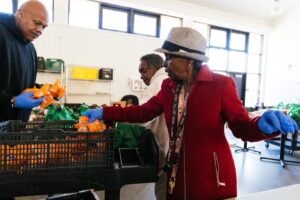
Food Bank: Why did you start The Village Project?
Ms. Adrian: We started in 2006, during the height of violence in this community. I was working in Oakland [and] my grandbaby was growing up [in the Fillmore]. I was taking my grandbaby to school one day on California Avenue and passed by this park — [I saw people] throwing frisbees, dogs were bouncing, people on blankets. Then it dawned on me, I don’t see that in the Western Addition.
[Because I show up for my community by feeding people], I was concerned about how the babies* eat during the summer. I talked with my boss and told him that I wanted to volunteer [in the Fillmore] and feed the babies, and that’s how The Village Project started. [I would] come over on Wednesdays, knock on doors and tell the parents “Let me have your babies,” and I’d take them out on field trips to the Aviation Museum and feed them. For some, it was their first time riding BART.
Eventually, the babies would ask for more. I decided to take a leave of absence from my sales job at a Xerox dealership. My boss held my workstation for two years, [but I got hooked], so I just told him, “I can’t come back.” And that was basically the start of The Village Project.
FB: The Village Project’s website boast the Mardi Gras, San Francisco Style and Seven Days of Kwanzaa events; are there other events that The Village Project hosts?
Ms. Adrian Williams: We also have a community barbeque to kick off the summer. I’m also into the blues, honey, so we have a free blues concert.
My stuff is free, and somebody told me a long time ago that people don’t value free; I tend to disagree. I think it’s just the way you present it. People are prideful, and in the era I grew up in, pride was very important in my community.
FB: What does food mean to you?
Ms. Adrian: I grew up in the South, and we had wonderful lunches. We had real cooks in the kitchen, and we were poor. Growing up, lunch was a major meal for me. So that was one of my concerns, that the babies had food to eat. I guess that’s Southern because I’m always trying to feed people.
FB: Do you want the legacy of your work to continue into future generations?
 Ms. Adrian: My daughter is the president of the Fillmore Corridor, so she’s already walking in my footsteps working with the community.
Ms. Adrian: My daughter is the president of the Fillmore Corridor, so she’s already walking in my footsteps working with the community.
FB: It’s Women’s History Month. What does Women’s History mean for you and your community?
Ms. Adrian: I have a strong history of women [in my family]. I used to always wonder why the male person was often missing in the community, and I figured out why when we got older. In the old days, if you’re subsidizing, you could lose your income if you moved a man into your house. Well, my mother, Ruth Williams, who was the strongest person, worked three jobs, and was always astute. She literally changed legislation in the state of Louisiana to allow women on welfare to have a man stay in their household. It just amazes me how much humanity is deprived because of certain economic situations. That’s how my mother was, strong, extremely strong woman.
* When Ms. Adrian says “babies,” she is talking about young children/youth in general, not just infants and toddlers.


 At the Food Bank, we know ending hunger means disrupting its root causes, which include poverty and housing instability. Real change is impossible if we don’t tackle these issues together
At the Food Bank, we know ending hunger means disrupting its root causes, which include poverty and housing instability. Real change is impossible if we don’t tackle these issues together 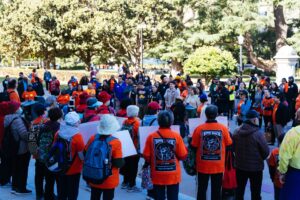 On April 30, our Policy and Advocacy team gathered in-person with the California Hunger Action Coalition (CHAC) in Sacramento to raise their voices for Hunger Action Day! Hunger Action Day is the single largest anti-hunger advocacy day in California, bringing advocates from across the state to the State Capitol to speak face-to-face with our policymakers.
On April 30, our Policy and Advocacy team gathered in-person with the California Hunger Action Coalition (CHAC) in Sacramento to raise their voices for Hunger Action Day! Hunger Action Day is the single largest anti-hunger advocacy day in California, bringing advocates from across the state to the State Capitol to speak face-to-face with our policymakers.
 Reflecting on a jam-packed day of collaboration, Food Bank staff came away feeling energized to continue pushing for impactful, equitable policy.
Reflecting on a jam-packed day of collaboration, Food Bank staff came away feeling energized to continue pushing for impactful, equitable policy.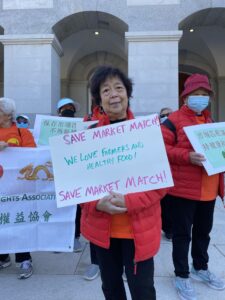 TNDC’s Tenderloin Chinese Rights Association.
TNDC’s Tenderloin Chinese Rights Association. 
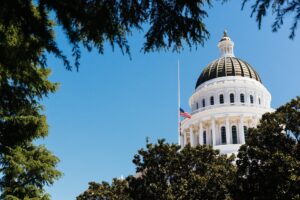
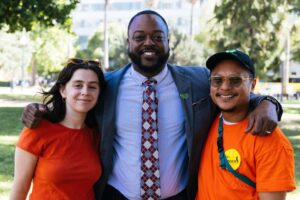


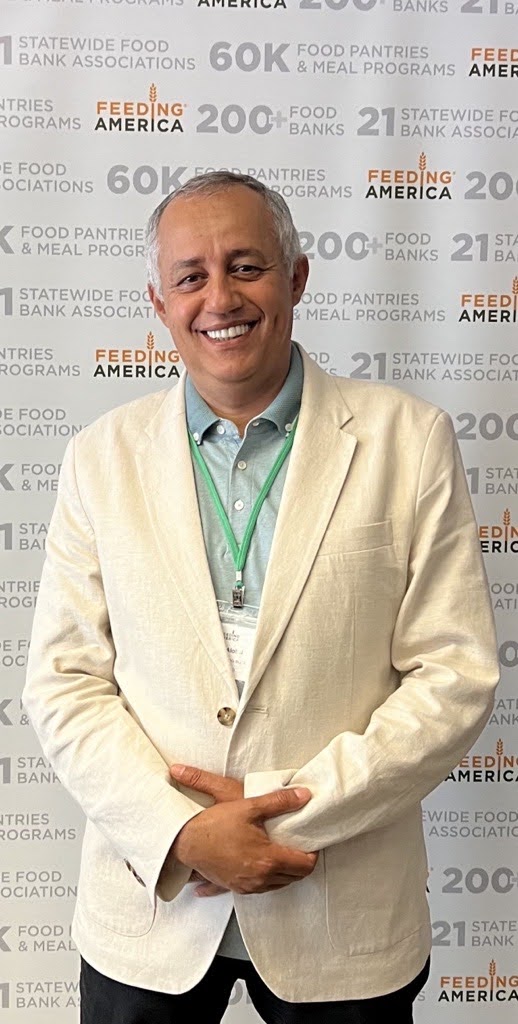

 Food Bank (FB): Before we dig into the Elevating Voices: Power Summit, let’s hear a little more about your work in the Tenderloin.
Food Bank (FB): Before we dig into the Elevating Voices: Power Summit, let’s hear a little more about your work in the Tenderloin.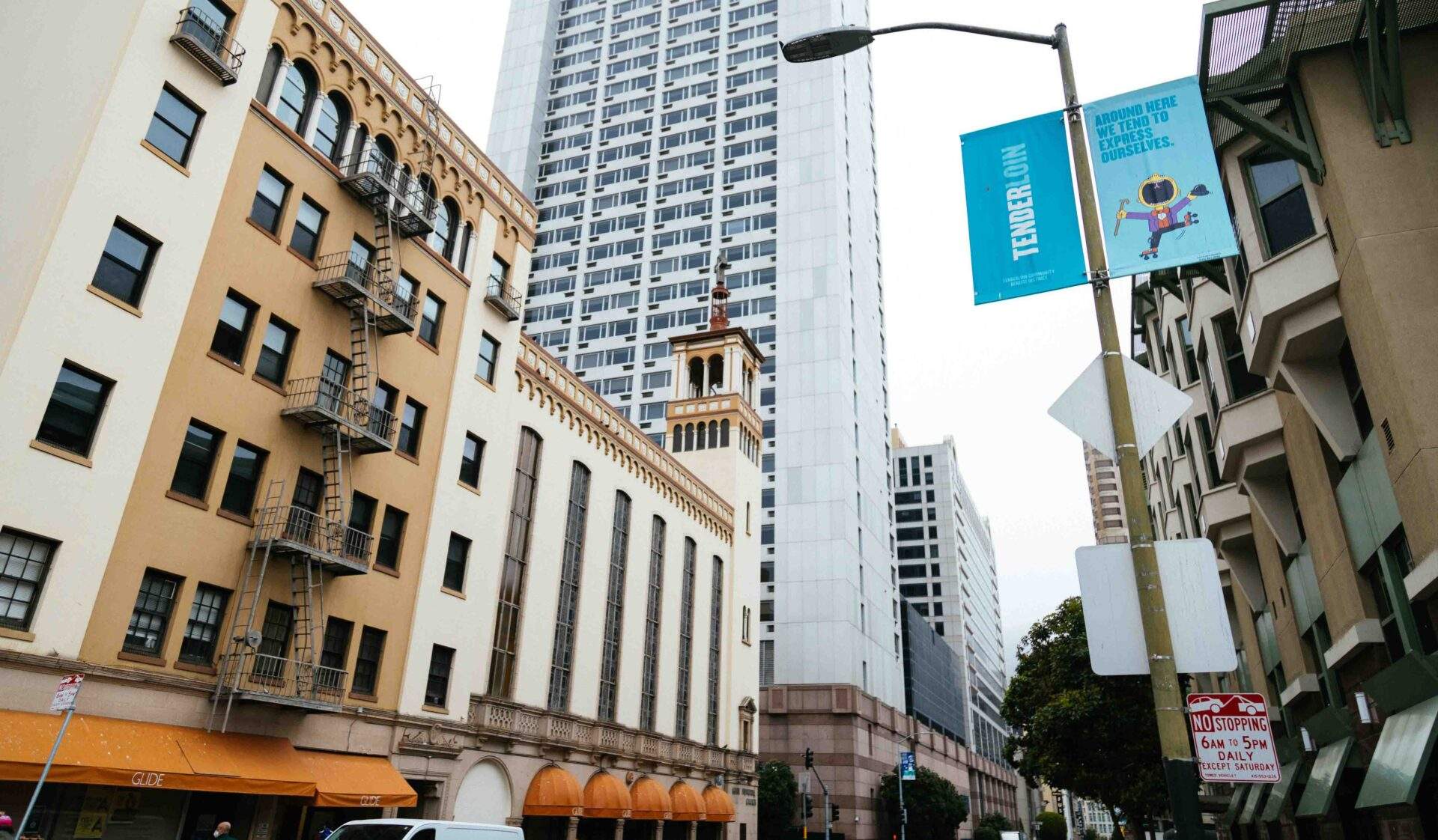


 40 years, an activist, and a pantry participant since 2020 in his neighborhood of the Western Addition. He’s also one of roughly 101,000 CalFresh (known as SNAP federally) recipients in San Francisco who saw their grocery budget decimated overnight. This is due to the federal government’s decision to cut emergency allotments, which boosted CalFresh benefits by an average of $160 for recipients in San Francisco during the pandemic. That’s a loss of nearly $12 million a month in food assistance for our neighbors.
40 years, an activist, and a pantry participant since 2020 in his neighborhood of the Western Addition. He’s also one of roughly 101,000 CalFresh (known as SNAP federally) recipients in San Francisco who saw their grocery budget decimated overnight. This is due to the federal government’s decision to cut emergency allotments, which boosted CalFresh benefits by an average of $160 for recipients in San Francisco during the pandemic. That’s a loss of nearly $12 million a month in food assistance for our neighbors. For Miguel, his CalFresh benefits were a supplemental support that helped him stretch his budget and extend a little kindness to other friends who were struggling during the throes of the pandemic. “I was able not only to get things for myself, but I was able to invite friends to get food with me so we can have dinner together. I did it with two friends, maybe every two weeks. Eating alone is not really the best thing. Having company and being able to provide something a little extra, that was very nice. It really made a difference for me and my friends.”
For Miguel, his CalFresh benefits were a supplemental support that helped him stretch his budget and extend a little kindness to other friends who were struggling during the throes of the pandemic. “I was able not only to get things for myself, but I was able to invite friends to get food with me so we can have dinner together. I did it with two friends, maybe every two weeks. Eating alone is not really the best thing. Having company and being able to provide something a little extra, that was very nice. It really made a difference for me and my friends.” leave food banks to pick up the slack, it’s essential that the Food Bank maintains access to the fresh produce, proteins, and grains that 53,000 neighbors rely on weekly to nourish themselves. “The benefit is greater than just food,” Miguel explained to us. “At my age, I don’t think there’s any stigma – I encourage other people to apply for these services. I have diabetes, so I have to be careful about what I’m eating. And besides the food, I can use the money [I save] on other things that are beneficial for my health or enjoyment. It’s a ripple effect; it magnifies your life in all these positive ways.”
leave food banks to pick up the slack, it’s essential that the Food Bank maintains access to the fresh produce, proteins, and grains that 53,000 neighbors rely on weekly to nourish themselves. “The benefit is greater than just food,” Miguel explained to us. “At my age, I don’t think there’s any stigma – I encourage other people to apply for these services. I have diabetes, so I have to be careful about what I’m eating. And besides the food, I can use the money [I save] on other things that are beneficial for my health or enjoyment. It’s a ripple effect; it magnifies your life in all these positive ways.”
 Ms. Adrian: My daughter is the president of the
Ms. Adrian: My daughter is the president of the 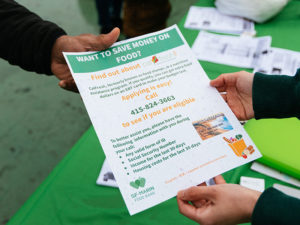 “I pick up groceries from the food pantry in the Canal (San Rafael) on Tuesdays, and the rest I buy with my food stamps. Last month, I received $211. Now, the letter from the county says I’ll receive $23, at most $29,” Gladys told us over the phone in Spanish. As a senior, grocery shopping is already made difficult by mobility issues: “My son will often go shopping for the both of us. I’m scared I’m going to fall.” Now, it will be doubly difficult without the emergency allotments she depended on previously.
“I pick up groceries from the food pantry in the Canal (San Rafael) on Tuesdays, and the rest I buy with my food stamps. Last month, I received $211. Now, the letter from the county says I’ll receive $23, at most $29,” Gladys told us over the phone in Spanish. As a senior, grocery shopping is already made difficult by mobility issues: “My son will often go shopping for the both of us. I’m scared I’m going to fall.” Now, it will be doubly difficult without the emergency allotments she depended on previously. 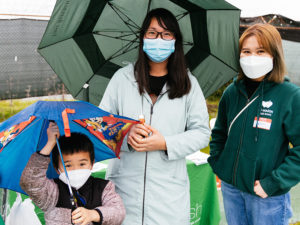 and Advocacy team continues to push at the federal level for benefits that better reflect the cost of living in our counties, and our CalFresh team continues assisting households in applying and securing the benefits they qualify for, we need our community members and local elected officials to rally in support of our neighbors facing food insecurity.
and Advocacy team continues to push at the federal level for benefits that better reflect the cost of living in our counties, and our CalFresh team continues assisting households in applying and securing the benefits they qualify for, we need our community members and local elected officials to rally in support of our neighbors facing food insecurity. 
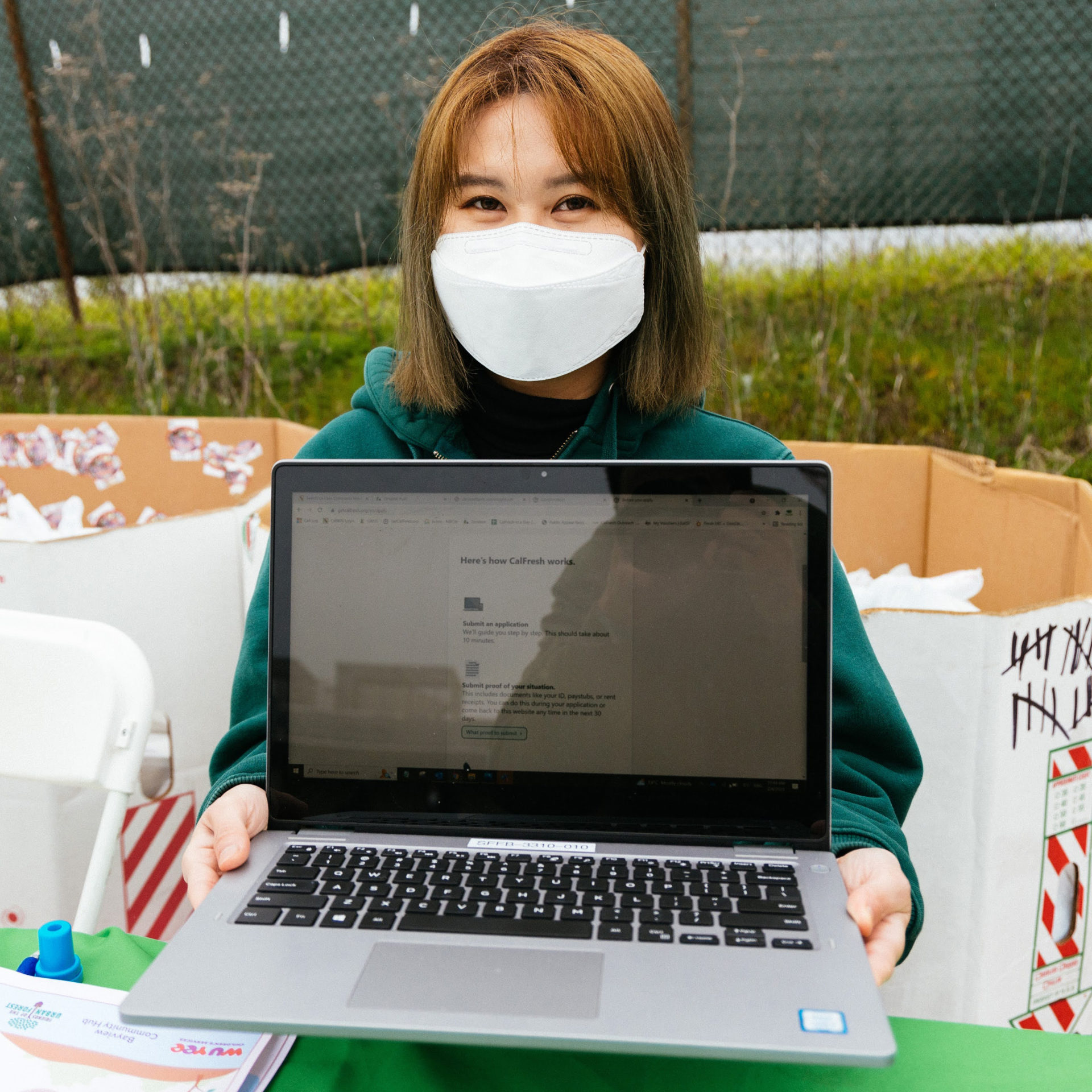
Share